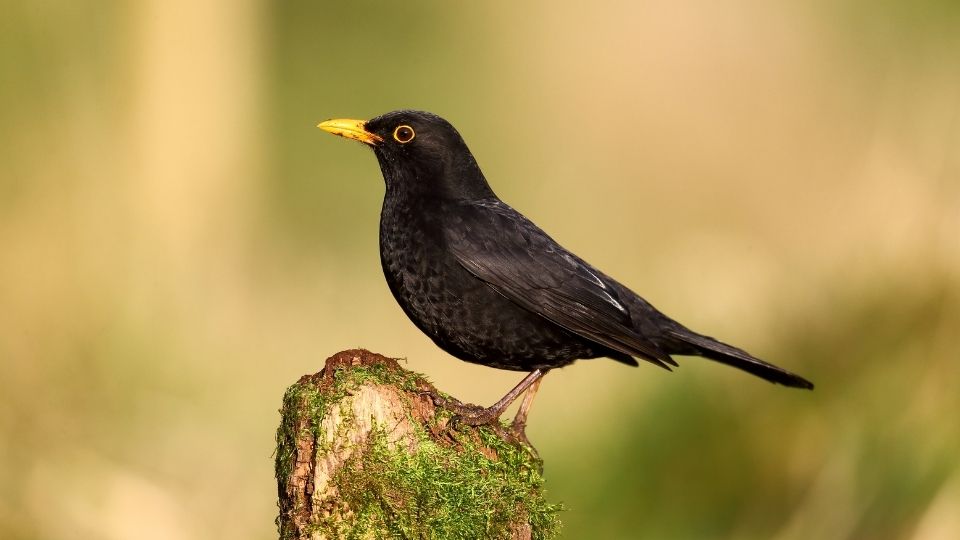Blackbirds are members of the Icteridae family from the Passeriformes order. Most species are predominantly black with yellow, red, or orange features. Blackbird species vary in size, shape, coloration, and behavior.
The Icteridae family is sometimes referred to as Icterids or New World Blackbirds. Icterids are found exclusively in the Americas and should not be confused with European blackbirds, which are thrushes.
While there are over 100 species of New World Blackbirds, we’re going to focus on some of the most common blackbird species in North America.
8 Common Blackbird Species in North America
In North America, there are several common blackbird species belonging to the family Icteridae.
Here are some of the most well-known blackbirds found in the region:
1. Red-Winged Blackbird (Agelaius phoeniceus)
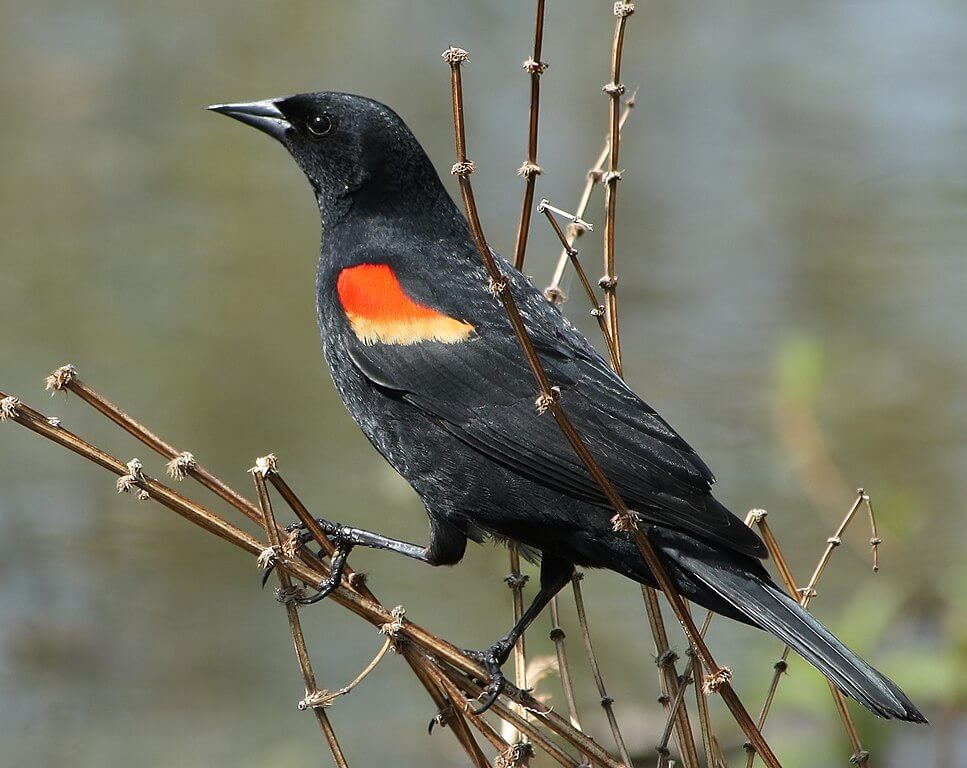
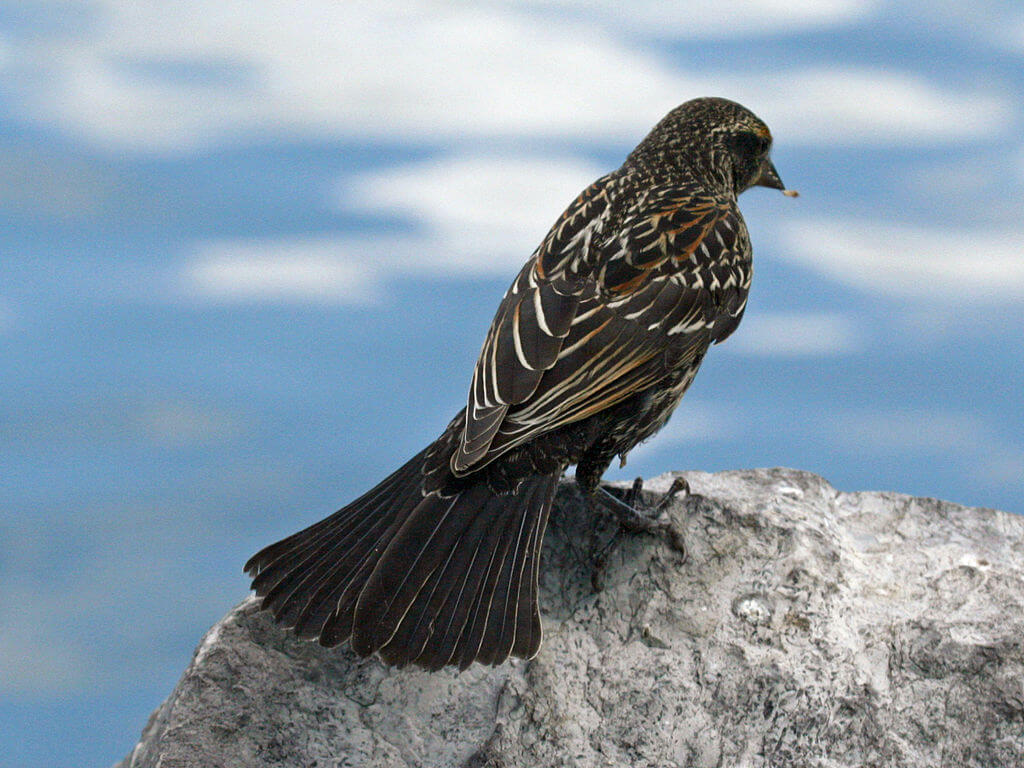
This is one of the most abundant and recognizable blackbird species. They can be found across much of the United States and Canada, except for the northernmost regions and some parts of the western mountainous areas.
Males have black plumage with bright red and yellow shoulder patches. Females are more subdued with streaked brown and black feathers.
Their distinctive song is a notable part of the soundscape in wetland habitats, described as a series of conk-la-ree notes.
Make sure also to read our articles on:
2. Common Grackle (Quiscalus quiscula)
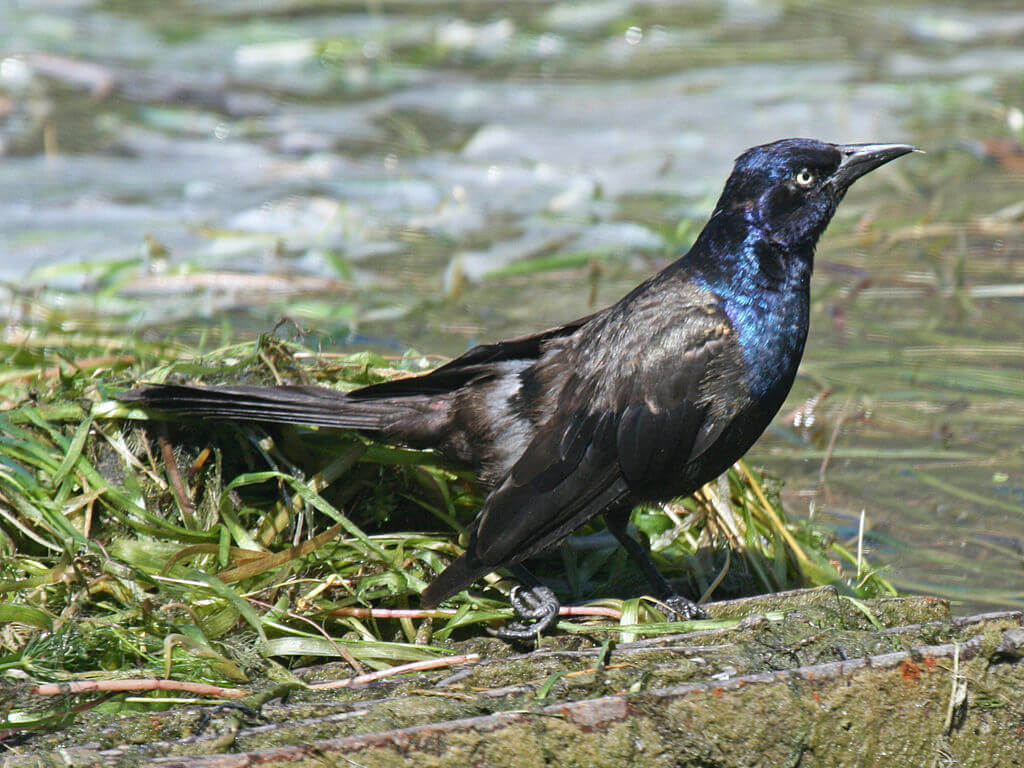
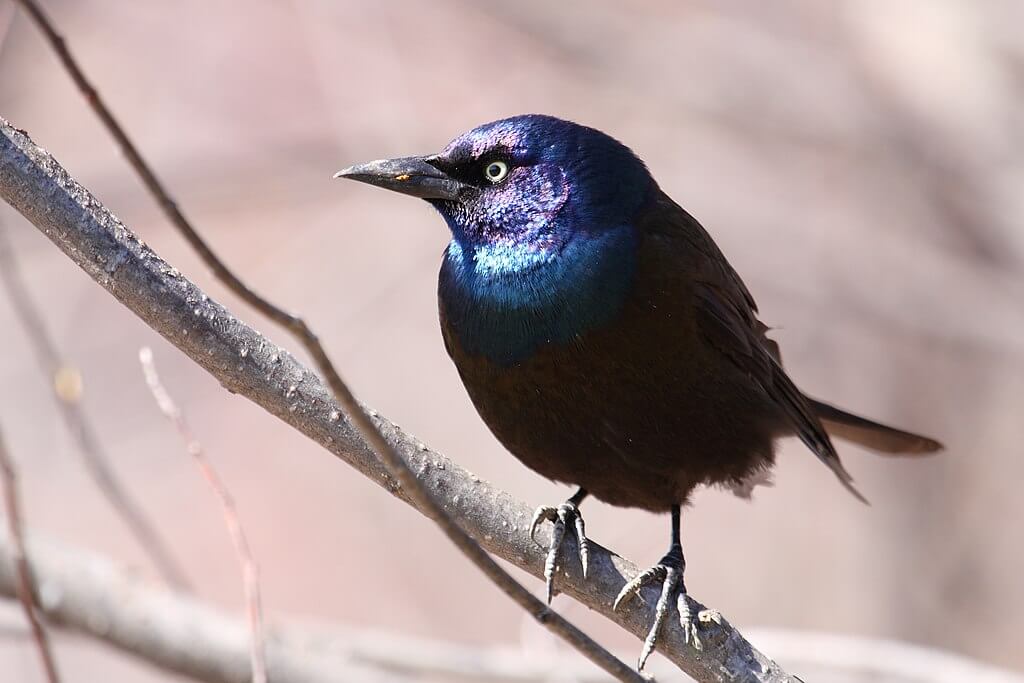
Common grackles have a widespread distribution across much of North America, from southern Canada to the southern United States. They are year-round residents in many parts of their range.
The common grackle is a large blackbird with an iridescent purple or greenish-blue sheen on its plumage. Their yellow eyes and long tails are distinctive features.
The vocalizations of common grackles include a variety of calls and squawks.
3. Brewer’s Blackbird (Euphagus cyanocephalus)
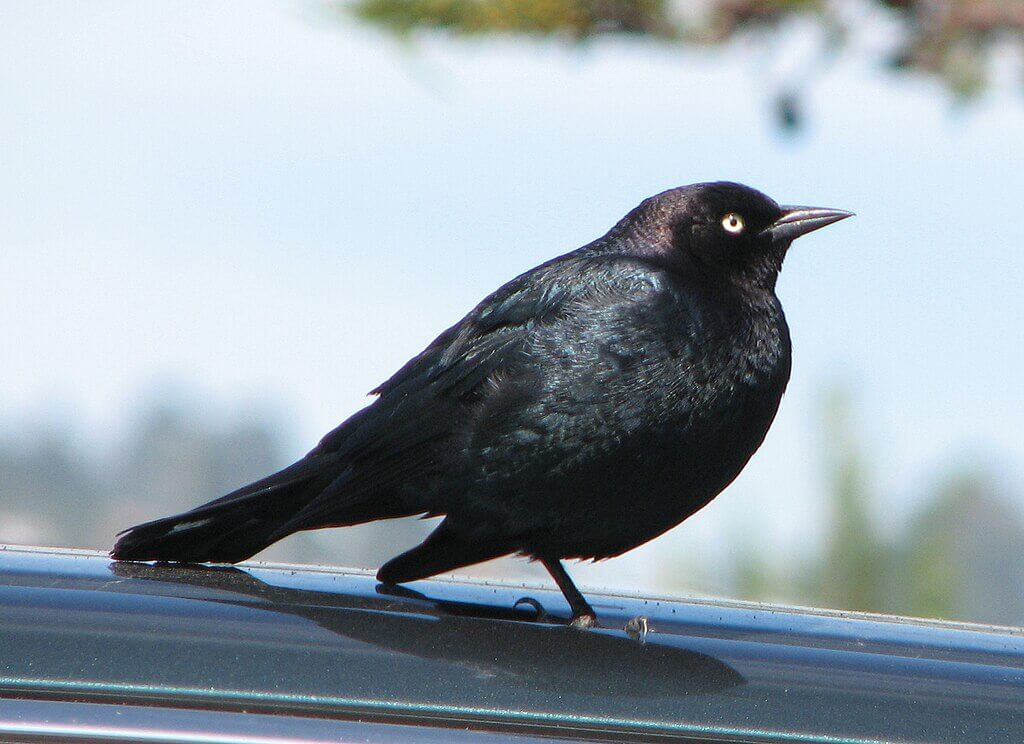
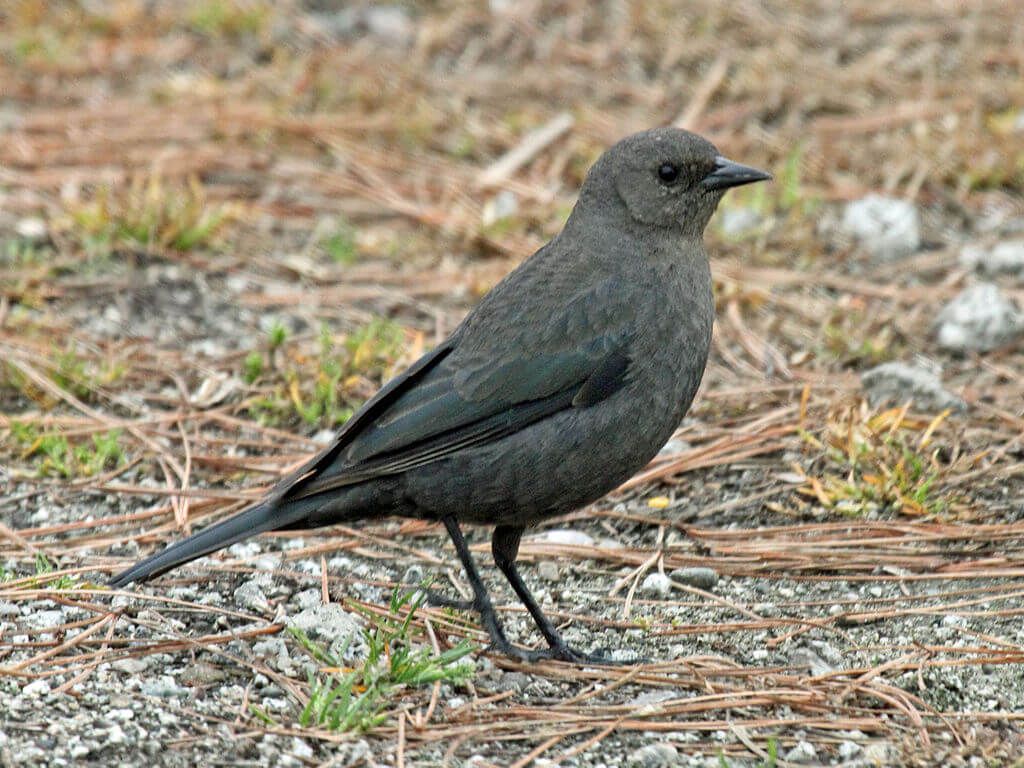
Brewer’s blackbirds have a broad distribution, from western and central Canada to the western and central United States.
They are migratory birds in some parts of their range, while in other regions, they may be year-round residents or exhibit only short-distance movements.
The brewer’s blackbird is mostly black with a glossy purplish or greenish sheen on its plumage. Males have striking yellow eyes.
The vocalizations of brewer’s blackbirds are diverse and include various whistles, chatters, and squawks. They are generally quite vocal, especially during the breeding season.
4. Rusty Blackbird (Euphagus carolinus)
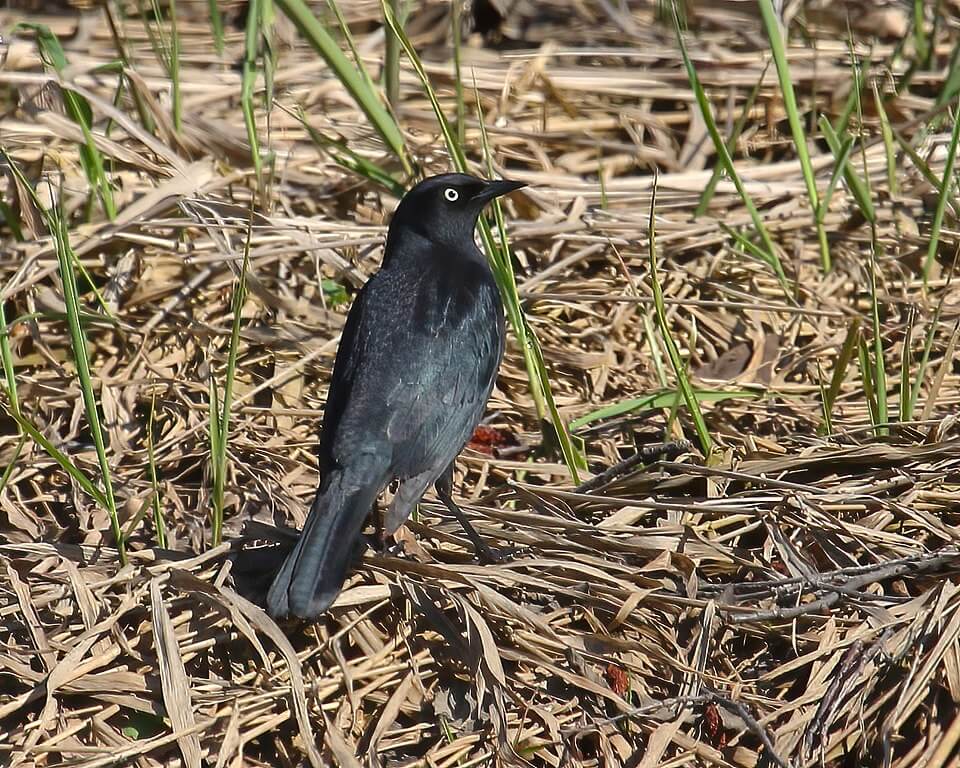
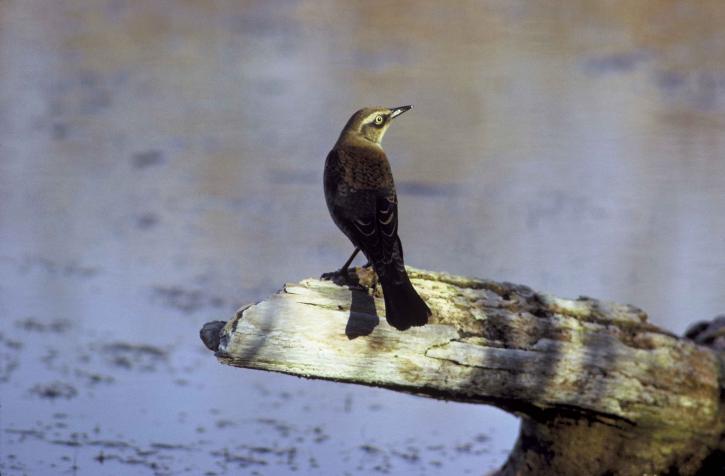
Rusty blackbirds have a breeding range in the northern parts of North America, including Alaska and much of Canada.
During the non-breeding season, they migrate to the southeastern United States, along the Gulf Coast, and parts of the Atlantic coast.
As the name suggests, this species has rusty edges on its blackish-brown plumage.
Rusty blackbirds have a variety of calls, including sharp metallic notes and chattering sounds, but they are generally not as vocal as some other blackbird species.
The Rusty Blackbird has experienced population declines over the past several decades, and it is considered a species of conservation concern.
5. Brown-Headed Cowbird (Molothrus after)
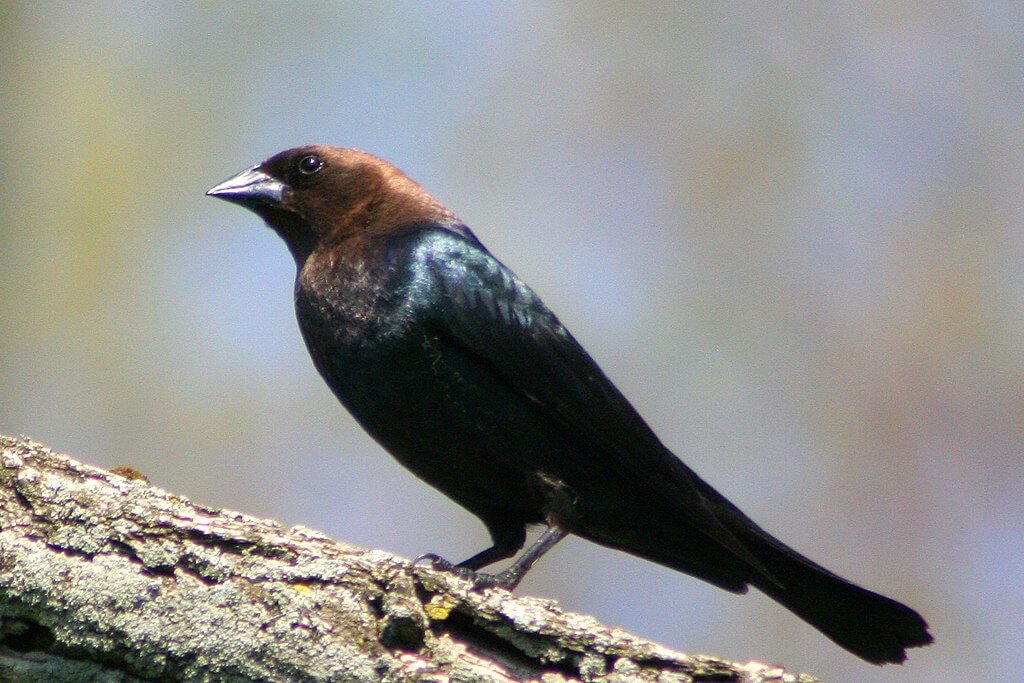
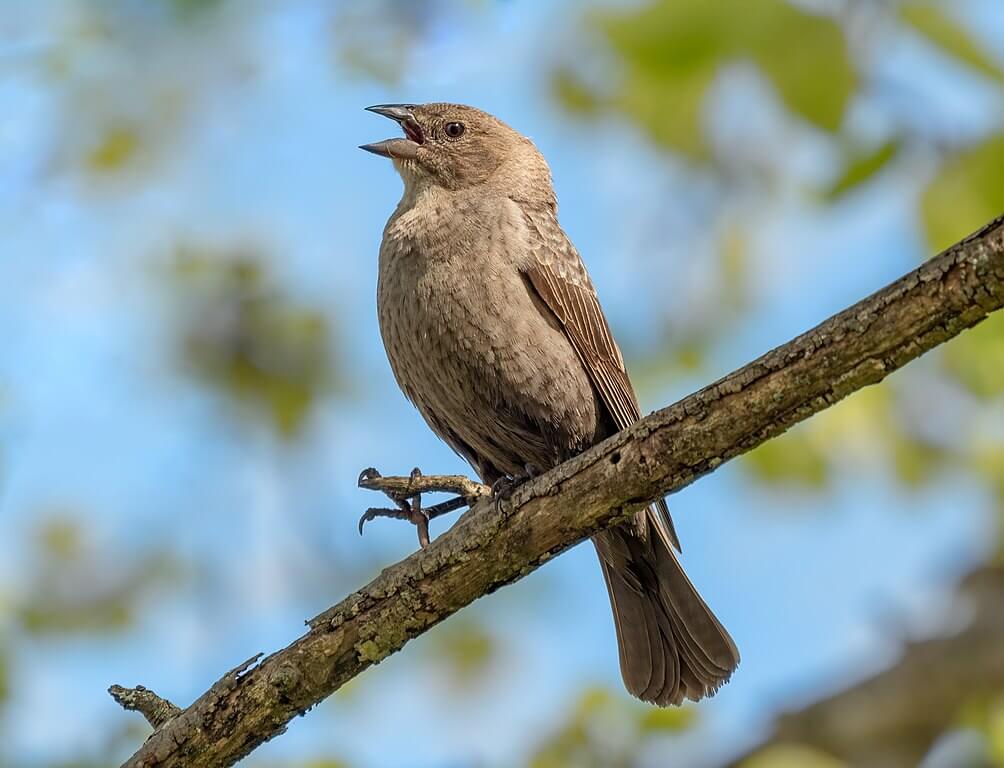
Brown-headed cowbirds are found from southern Canada to the southern United States. They are year-round residents in many parts of their range.
The male has a glossy black body and a brown head. Females are gray-brown overall and lack the glossy appearance.
Brown-headed cowbirds are not as vocal as some other blackbird species. Their calls include a series of whistles and gurgles.
6. Yellow-Headed Blackbird (Xanthocephalus xanthocephalus)
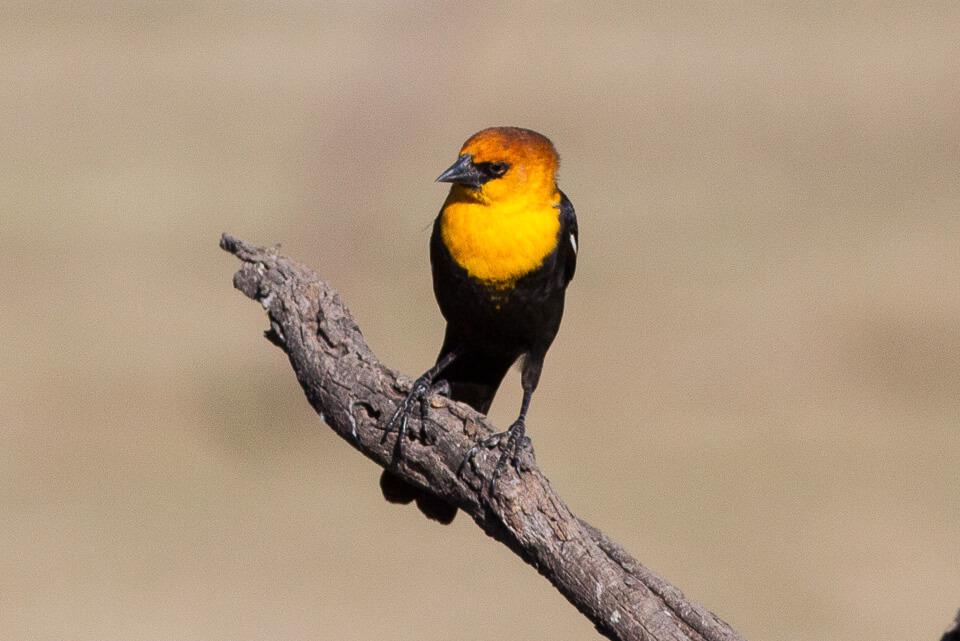
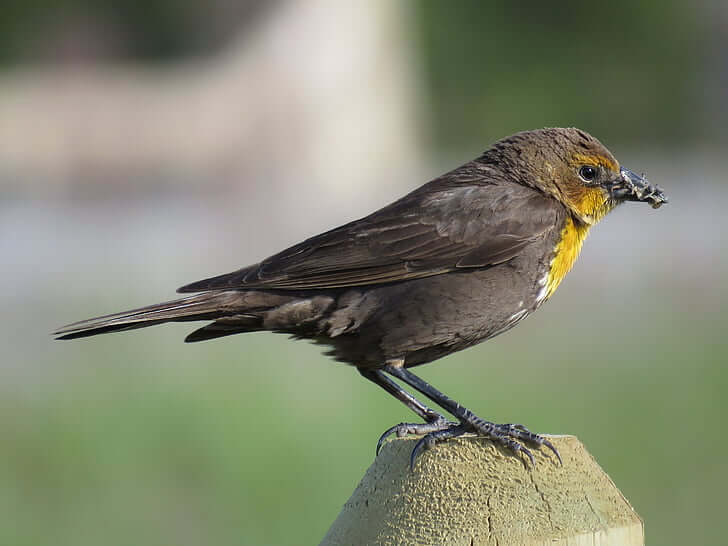
The yellow-headed blackbirds breed in western and central North America, from southern Alaska and western Canada to the northern United States, including the Great Basin and the Midwest.
During the non-breeding season, they migrate to more southern areas, mainly in the western United States and Mexico.
This species is known for being a striking blackbird with bright yellow head and breast. The rest of the body is mostly black.
Yellow-headed blackbirds have a variety of calls, including harsh and guttural notes.
7. Great-Tailed Grackle (Quiscalus mexicanus)
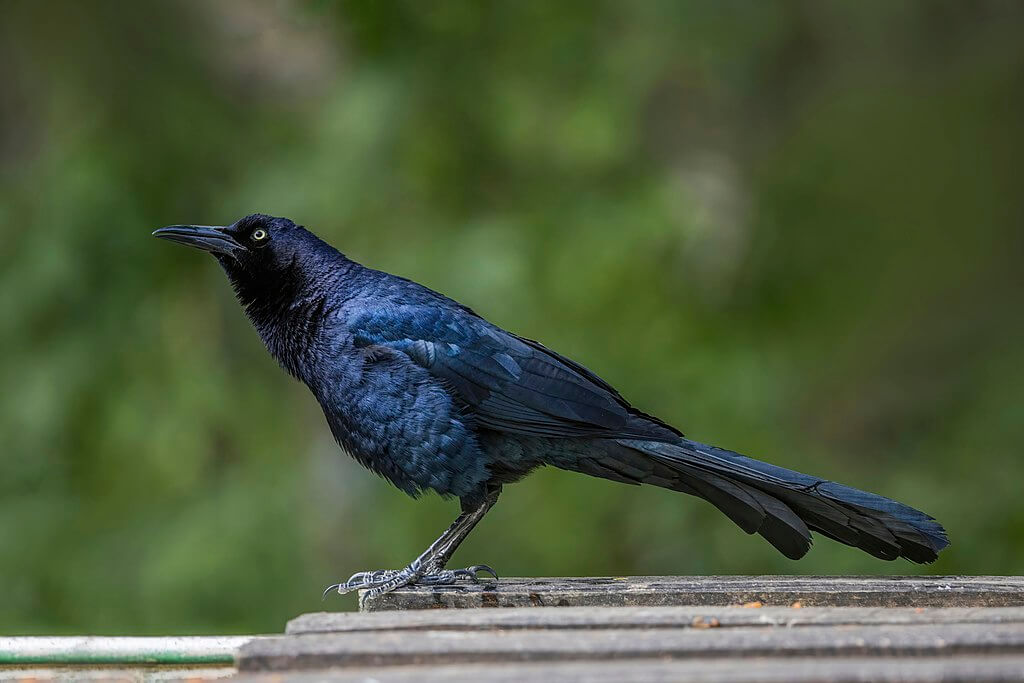
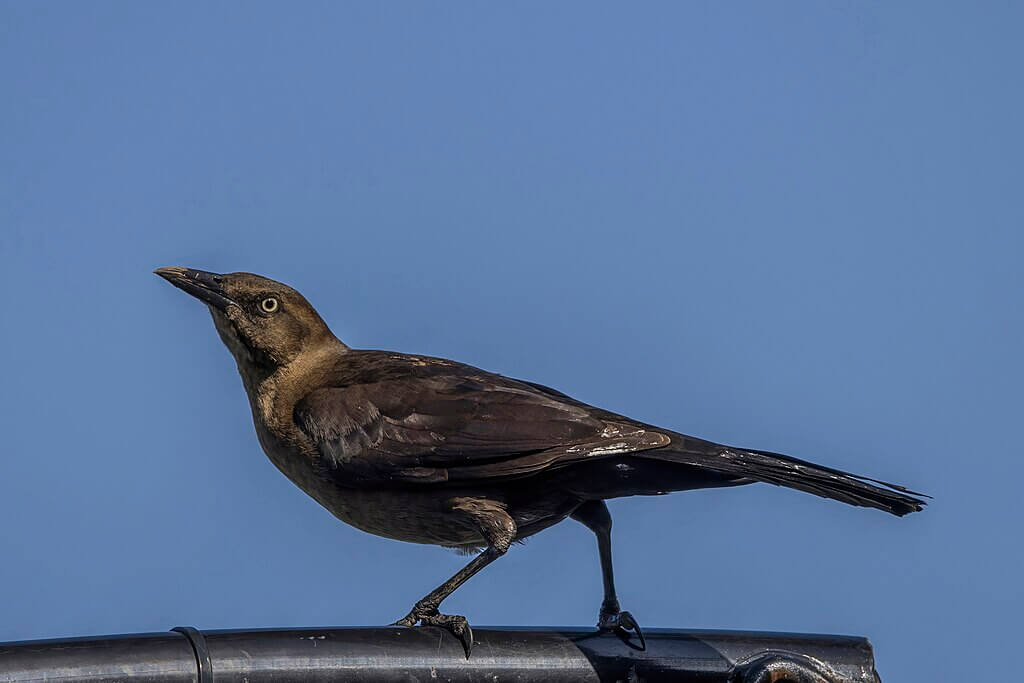
Great-tailed grackles have a broad distribution, ranging from the southern United States to Argentina in South America. They are year-round residents in many parts of their range.
The great-tailed grackle is a large blackbird with an elongated tail and a glossy black plumage. Males have yellow eyes.
These blackbirds are known for their diverse and sometimes loud vocalizations. Their calls include whistles, squawks, and various sounds imitating other bird species.
8. Bronzed Cowbird (Molothrus aeneus)
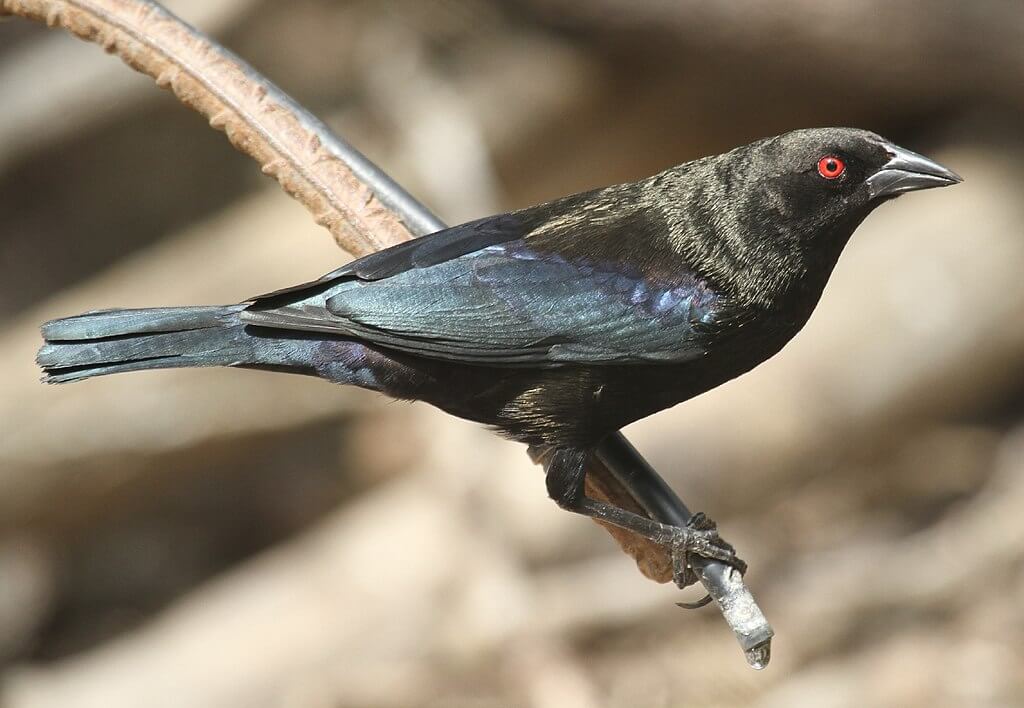
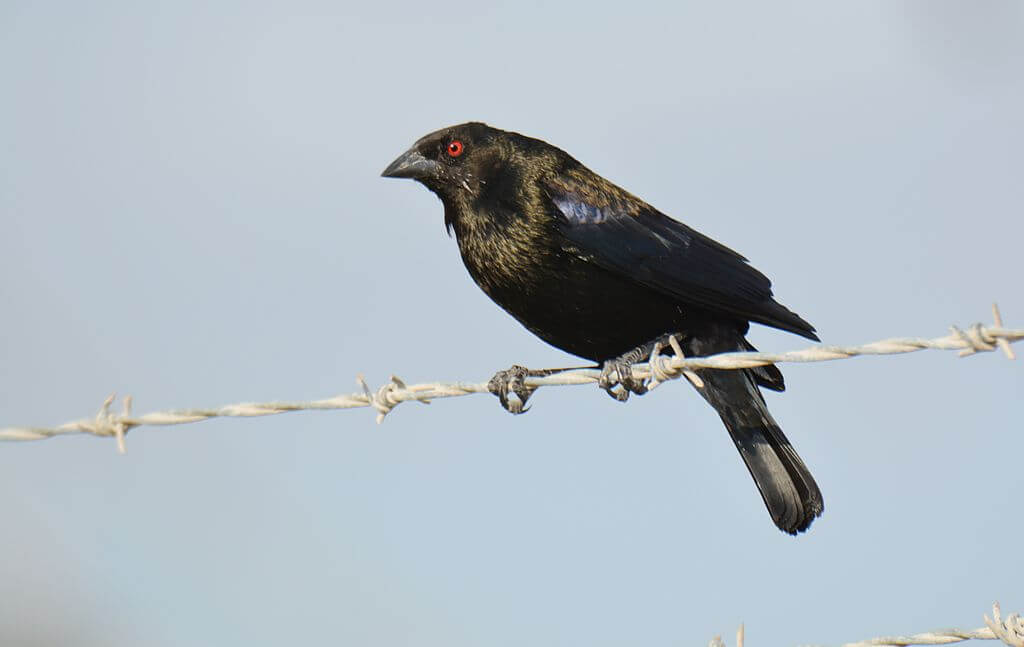
Just like the great-tailed grackles, bronzed cowbirds can be found in the southern United States all the way to Argentina.
The bronzed cowbird is similar to the brown-headed cowbird but with a more bronzed appearance, especially in males.
Bronzed cowbirds are generally not as vocal as some other blackbird species, but they do produce various calls, including whistles and chattering sounds.
Oaxaca, San Augustin Etla, terreno de Golf
These are just a few examples of the common blackbirds found in North America. Each species has its own unique characteristics and distribution across different regions of the continent.
Keep in mind that there are other less common blackbird species and some regional variations in their appearances and behaviors.
Are all blackbirds black?
Not all blackbirds in North America are entirely black. While many blackbird species have predominantly black plumage, there are exceptions, and some blackbird species have different color patterns.
For instance:
- Red-Winged Blackbird: The male red-winged blackbird has black plumage with distinctive red and yellow shoulder patches. Females are streaked brown and black, and they lack the bright shoulder patches.
- Brewer’s Blackbird: This species is mostly black but has iridescent purple or greenish hues on its plumage.
- Rusty Blackbird: Rusty blackbirds have blackish-brown plumage with rusty edges to their feathers.
- Common Grackle: This species displays iridescence in its plumage, which can appear blue, purple, or green, depending on the lighting.
Are all blackbirds migratory birds?
Not all blackbirds in North America are migratory; some are resident or non-migratory, while others are migratory.
For example, the common grackle and the red-winged blackbird are two well-known blackbird species in North America. Red-winged blackbirds are generally migratory birds, with populations in the northern parts of their range migrating south during the winter. However, some populations in the southern parts of their range may be non-migratory or only undertake short-distance movements.
On the other hand, the common grackle is considered partially migratory. Some individuals may migrate, especially in the northern parts of their range, while others may stay in their breeding range throughout the year or move only short distances.
Species like the brewer’s blackbird and the great-tailed grackle are examples of blackbirds that are more resident in nature, and they may not undertake extensive migrations.
Watch our video and discover 7 facts about blackbirds you may not have known about!
Are tricolor blackbirds and red-winged blackbirds the same?
No, tricolored blackbirds and red-winged blackbirds are not the same species; they are two distinct blackbird species found in North America.
While both species belong to the same genus, Agelaius, and share the blackbird family (Icteridae), they have distinct differences in their plumage and distribution.
The tricolored blackbird has a more limited range and a unique white wing patch, while the red-winged blackbird is well-distributed throughout North America and is easily recognized by its red and yellow shoulder patches.
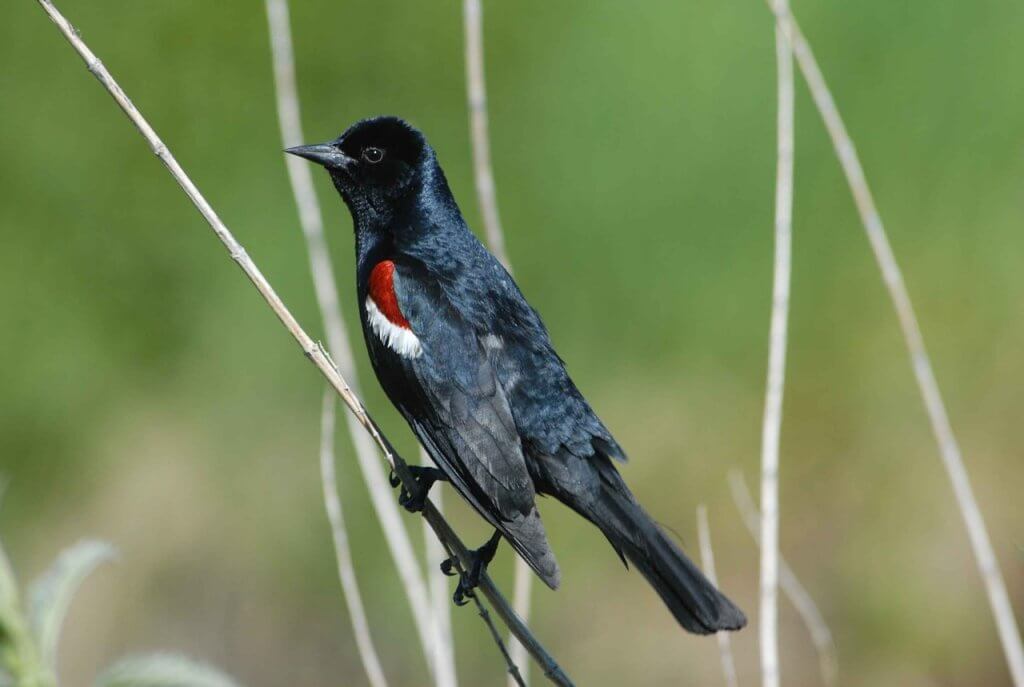
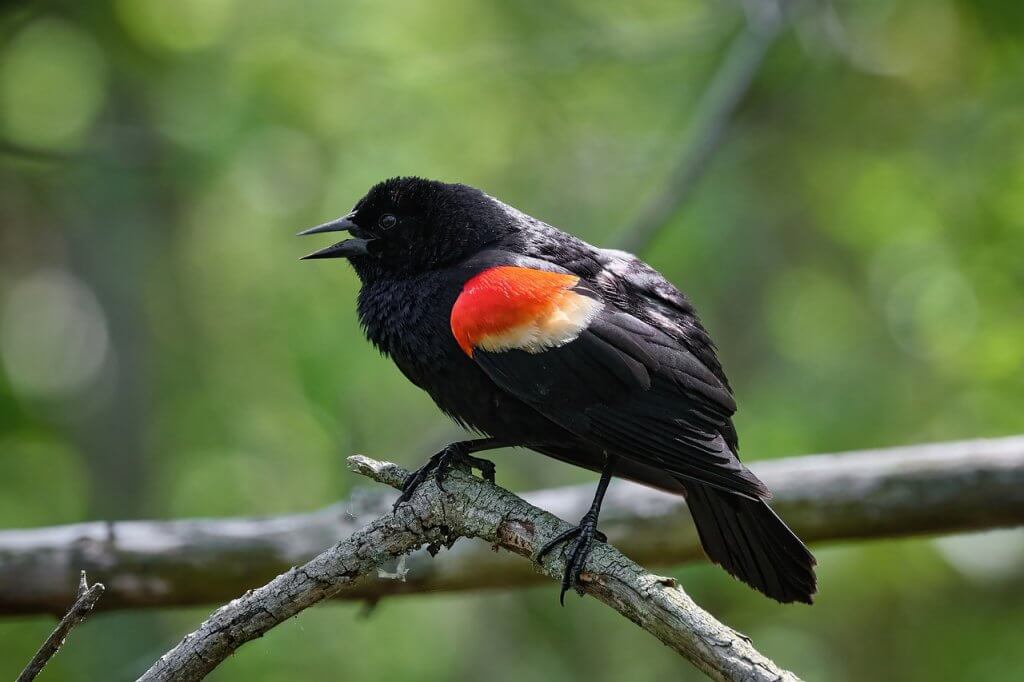
Are starlings a type of blackbird?
Starlings and blackbirds are separate bird families:
- Starlings belong to the family Sturnidae. The most well-known and widespread species is the common starling (Sturnus vulgaris).
- Blackbirds belong to the family Icteridae.
So, while both starlings and blackbirds are types of birds with dark plumage, they are part of different bird families and are not the same species.
Starlings are an invasive species known to raid bird feeders and outcompete smaller birds of North America for resources. They also push other bird species out of nesting territories.
With their overwhelming numbers, starlings have a conservation status of least concern both here and in their native Europe.
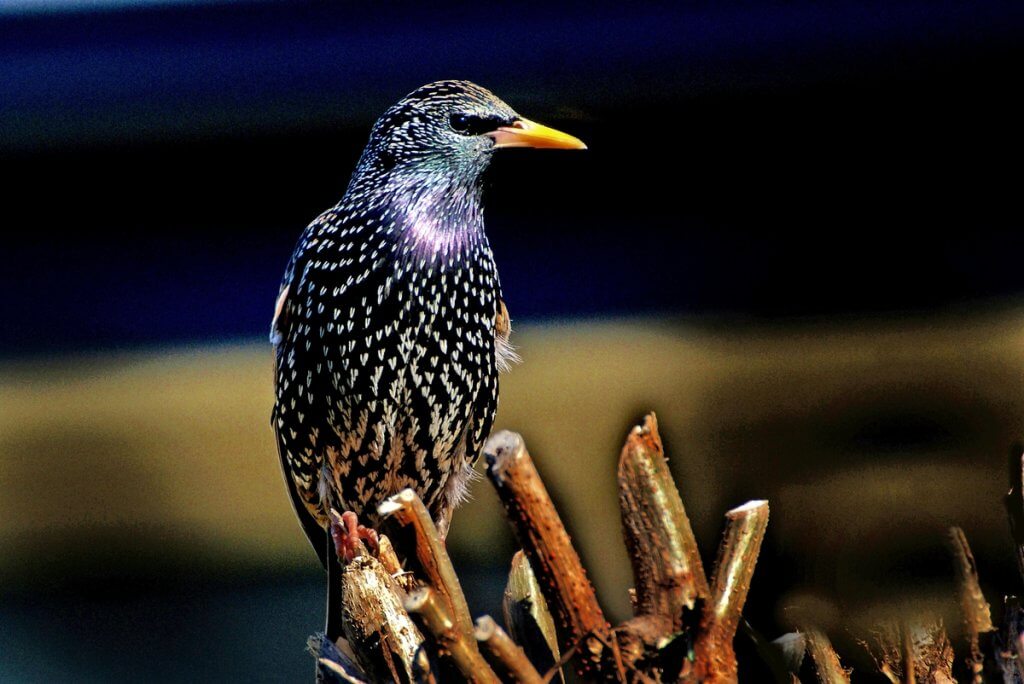
What is the difference between a red-Winged blackbird and a sparrow?
The primary differences between red-winged blackbirds and sparrows lie in their plumage, size, habitat preferences, behavior, and family classification.
While both groups are passerine birds, they belong to different families, have distinct appearances, and occupy different ecological roles within their respective habitats.
Adult male red-winged blackbirds have glossy black plumage with bright red and yellow shoulder patches (epaulets). Females have a more streaked appearance with brown and black plumage.
Sparrows generally have more subdued plumage with various shades of brown, gray, and white. They often have streaks or patterns on their plumage, but the specific appearance varies between sparrow species.
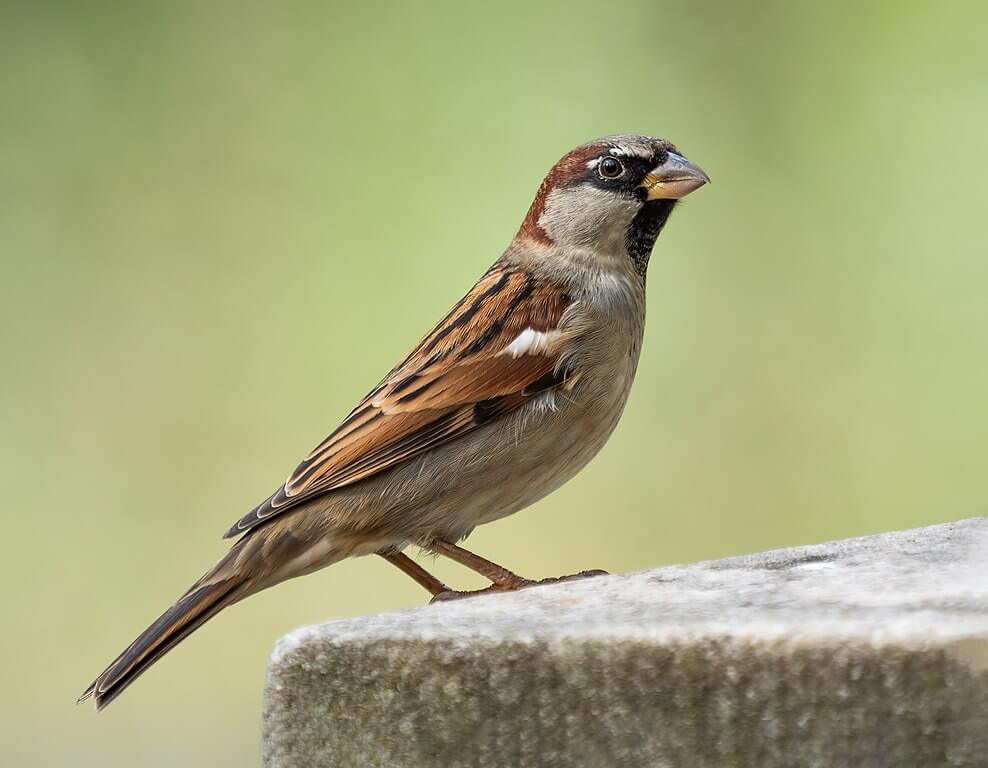
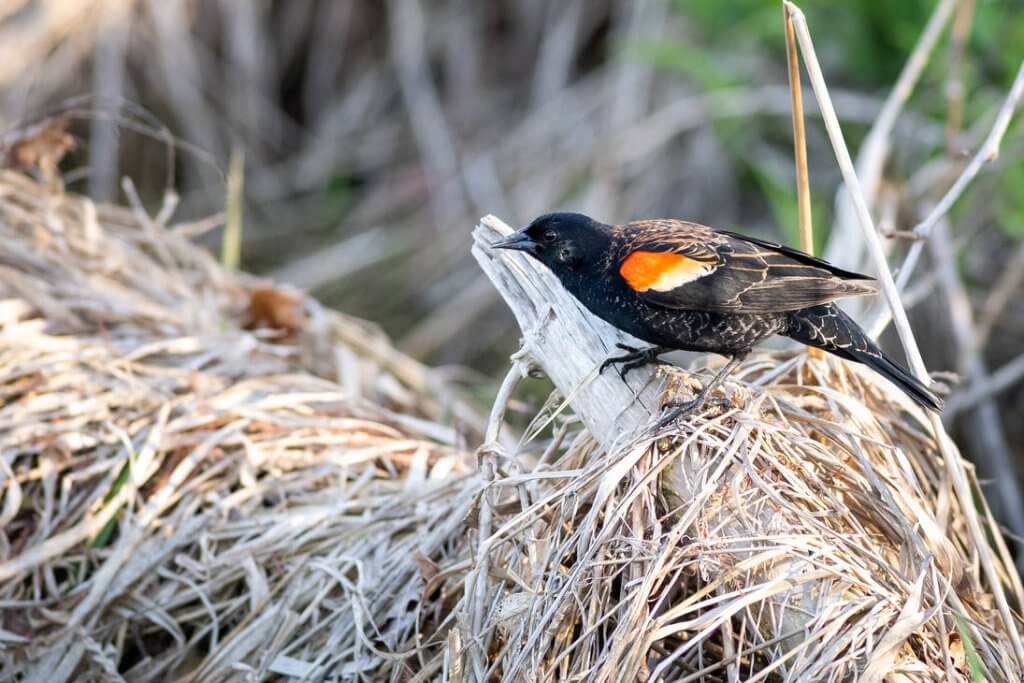
Are blackbirds brood parasites?
A brood parasite is a species of bird that lays its eggs in the nests of other bird species and relies on the host birds to incubate and raise their young. Brood parasitism is a reproductive strategy employed by certain bird species to save energy and resources by avoiding the responsibilities of building a nest, incubating eggs, and caring for the chicks.
Cowbirds are the most common brood parasite in North America. Most North American birds cannot tell the difference between their own eggs and cowbird eggs. Birds that can, are known to destroy or abandon cowbird eggs and lay their own eggs elsewhere. The rest end up raising cowbird nestlings, often at the expense of their own young.
Since cowbird eggs hatch quickly, cowbird nestlings are fed by their host before the other eggs have a chance to hatch.
While the breeding habits of the cowbird may lead to the destruction of other songbird eggs or even result in young birds getting smothered by cowbird nestlings, they are still protected under the Migratory Bird Treaty Act.
This means humans are not allowed to remove cowbird eggs from nests.

